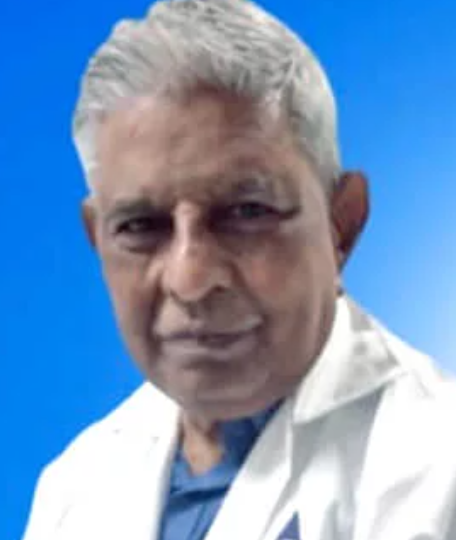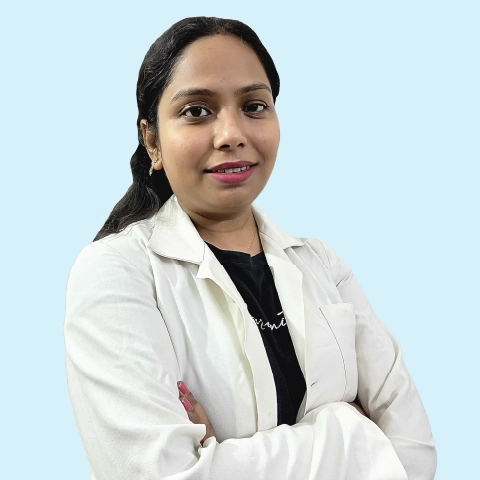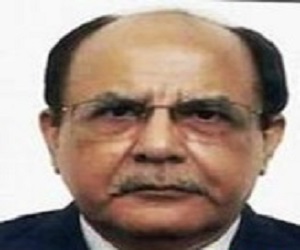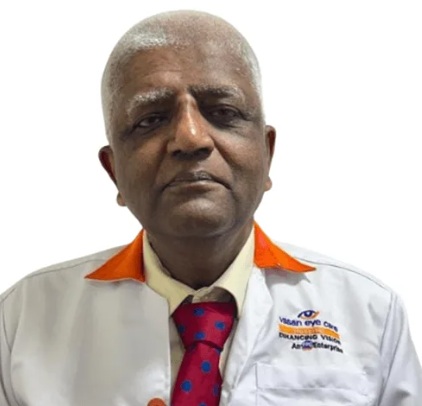Diagnostic Tests for the Eye

Quick Summary
- Eyes are an essential organ of the body that enables us to see.
- Any disease caused in the eye should never be ignored as it might lead to severe consequences.
- Various kinds of diagnostic tests aid us in identifying eye diseases.
Table of Contents
The eyes are an essential organ of the body that enables us to see. Any disease caused in the eye should never be ignored as it might lead to severe consequences. Therefore, an appropriate diagnosis is very important for treating the eyes.
Various kinds of diagnostic tests aid us in identifying eye diseases.
Diagnostic Tests
The choice of treatment for any eye disease is based upon the results of the diagnostic tests. Apart from identifying these tests are also performed to check the severity of an eye disorder.
There is a range of diagnostic tests available for the eyes such as:
Angiography
Angiography of the eye employs the application of dye to make blood vessels more apparent so that the medical practitioner can inspect or photograph them directly.
- Fluorescein angiography
- It helps a specialist to notice the veins toward the rear of the eye exhaustively.
- A blue-light-noticeable fluorescent colour is infused into a vein in the individual's arm. The colour goes along the individual's circulation system and even in the retina's veins.
- A speedy progression of photographs of the retina, choroid, optic circle, iris, or a mix of these is taken not long after the colour is infused. The colour inside the veins fluoresces, featuring the vessels.
- Macular degeneration obstructed retinal veins, and diabetic retinopathy can be in every way analysed by fluorescein angiography.
- This kind of angiography is frequently used to diagnose individuals who might require retinal laser tasks.
- Indocyanine green angiography
- It permits clinicians to see the retinal and choroidal veins.
- Fluorescent colour is infused into a vein, like a fluorescein angiography.
- This kind of angiography gives specialists more data about the choroid's veins than fluorescein angiography.
- Macular degeneration and the arrangement of fresh blood vessels in the eye are both apparent with indocyanine green angiography.
Electroretinography
- It permits a clinician to look at the capacity of the retina's light-detecting cells (photoreceptors) by observing the retina's reaction to light glimmers.
- The eye is desensitized and the student is widened with eye drops.
- The cornea is then covered with a keep cathode looking like a contact focal point, and one more terminal is put on the skin of the face adjoining.
- From that point forward, the eyes are set to open.
- The individual looks at a blazing light in a darkish room.
- The cathodes record the electrical activity produced by the retina because of light glimmers.
- Electroretinography is especially useful for diagnosing ailments influencing the photoreceptors, for example, retinitis pigmentosa.
Ultrasonography
- Ultrasonography can be utilized to analyse strange constructions like growth or retinal separation.
- A sample is delicately positioned alongside the shut eyelid and springs back sound waves off the eyeball without causing any pain.
- The two-layered picture within the eye is made by reflected sound waves.
- Whenever an ophthalmoscope or slit lamp can't see the retina as the eye is foggy or any other random reason is hindering the view, ultrasonography can help.
- Ultrasonography can likewise be utilized to take a gander at the blood veins that supply the eye (Doppler ultrasonography) and to quantify the corneal thickness (pachymetry).
Pachymetry
- Pachymetry is the test for estimating the thickness of the cornea
- Ultrasonography is normally used to do pachymetry.
- The eye is desensitized with drops before an ultrasonic test is delicately positioned on the outer layer of the cornea for pachymetry.
- Since the instruments don't contact the eye, optical pachymetry doesn't need desensitizing eye drops.
- It is widely utilised in refractive eye medical procedures, for example, laser in situ keratomileuses (LASIK).
Optical Coherence Tomography (OCT)
- It can deliver high-goal pictures of constructions like the optic nerve, retina, choroid, and glassy humour toward the rear of the eye.
- The OCT can be used to identify retinal oedema.
- OCT is like ultrasonography, however rather than sound, it utilizes light.
- OCT can help to analyse retinal issues, for example, macular degeneration, conditions that make fresh blood vessels structure in the eye, and glaucoma.
Computed Tomography (CT) and Magnetic Resonance Imaging (MRI)
- CT and MRI outputs can uncover exact data about the designs inside the eye as well as the hard construction that encompasses it (the orbit).
- These methods are used to survey eye wounds, specifically if specialists sense an unfamiliar item in the eye, orbital and optic nerve cancers, and optic neuritis.
Corneal Topography
- Corneal Topography is a procedure for reviewing and estimating the shape of the cornea, which is the clear front segment of the eye.
- This harmless test is frequently used to survey keratoconus and review the cornea before as well as after refractive medical procedures.
- The test can be utilized to fit contact lenses
- The individual is told to view straight in the front at a light with concentric circles.
- While the expert places the apparatus to take a preview of the cornea, the patient keeps up with their eye open for around five seconds.
- It requires about a moment for every eye to finish the test. Many photos might be taken for each eye.
Specular Microscopy
- Specular microscopy involves photographing each cell layer of the cornea with a specific camera.
- A cornea specialist can assess the health of the cells using specular micrograph images.
- From the patient's perspective, the procedure is similar to OCT or retina imaging.
Visual Field Test (Perimetry)
- A person's visual field is the total region that they can see at any given time. The visual field test, also known as perimeter, determines where the field's boundaries are and how well a person's eyes see in various sections of the field.
- It assesses the retina, optic nerves, and visual pathways to the brain's functionality.
- The Humphrey Visual Field (HVF) and the Goldmann Visual Field (GVF) are the two devices that measure a two-dimensional map of a patient's whole field of vision.
Gonioscopy
- This test decides whether the point between the iris and the cornea is open and wide or closed and narrow.
- Eye drops are used to anaesthetize the eye during the assessment. A contact lens is delicately put on the eye with a hand-held device.
- This contact lens includes a looking glass that helps the specialist to examine the angle between the iris and cornea.
Tonometry
- Tonometry is an analytical method to estimate the amount of pressure inside your eye. Eye drops are utilized to anaesthetize the eye during tonometry.
- The internal pressure of the eye is then estimated utilizing a tonometer by a specialist or professional.
- A little device or a warmed puff of air is utilized to apply a small measure of pressure on the eye.
Ophthalmoscopy
- Ophthalmoscopy, otherwise called funduscopy, is a test that utilizes an ophthalmoscope to permit a specialist to see inside the eye's fundus and different parts.
- It very well might be done as a feature of a standard actual assessment or as a component of an eye assessment.
Colour Vision Tests
- Colour vision can be measured using the Farnsworth-Munsell 100 Hue Test.
- The operator instructs the patient to arrange the variously coloured tiles in order of colour.
- The test takes about 10 minutes per eye and is done independently on each eye.
- This test can detect and quantify both inherent and acquired colour vision impairments.
Dilated Pupillary Exam
- Pupil dilation is performed during an eye exam to widen the pupils so that the eye doctor can properly examine the optic nerve and retina. Dilation can be achieved by using eye drops.
- After administering eye-drop, it takes 20-30 minutes to attain complete dilation of pupils.
- The exam is necessary for preventing and treating vision loss-causing eye problems.
- Eye conditions like glaucoma, macular degeneration, etc., can be diagnosed by dilated pupillary exam.
Refraction
- A refraction is an eye test that determines a patient's prescription for eyeglasses or contacts during a thorough eye examination.
- The patient sits in a chair and focuses on a 20-foot-away eye chart with a phoropter or refractor.
- The patient is asked which lenses make the chart appear more or less clear as the doctor or technician adjusts the lenses.
- A refraction test not just indicates if a patient needs corrective lenses but also assists the doctor in monitoring the patient's overall eye health.
- Refraction test is done for the diagnosis of conditions like presbyopia, macular degeneration, myopia, retinal detachment, etc.
Slit Lamp Examination
- Slit-lamp examination is also called Biomicroscopy.
- This test allows the doctor to inspect the eyes microscopically for abnormalities or disorders.
- A doctor may use drops to make any irregularities on the cornea's surface more evident.
- The drops contain fluorescein, a bright pigment that washes tears away and may be used to dilate the pupils.
Non Contact Tonometry
- The intraocular pressure is measured by using a tonometry test.
- This test is performed to check for glaucoma, an eye illness that damages the nerve in the back of the eye and can result in blindness.
- Tonometry measures intraocular pressure by measuring the cornea's resistance to pressure.
- To measure the pressure, non-contact tonometry employs a puff of air to flatten the cornea and no eye drops are used in this method of tonometry.
Eye and Orbit Ultrasound
- An ultrasound of the eye and orbit measures and produces comprehensive pictures of the eye and orbit using high-frequency sound waves.
- In comparison to a conventional eye exam, this examination provides a far more thorough look at the inside of an eye.
- This aids in the diagnosis of eye illnesses as well as the detection of problems with the eyes.
- The test can help in the diagnosis of tumours, retinal detachment, glaucoma, cataracts, etc.
Visual Acuity Testing
- Visual acuity is the capacity to recognize the forms and details of the objects like colour and peripheral vision, depth perception, etc.
- A visual acuity test is an eye examination that determines how well we can see the details of a letter or symbol from a certain distance.
- This test is helpful in early detection of any kind of vision impairment.
Visual Field Testing
- Your visual field is the complete area that the eye can see when it is focused on a central point.
- A visual field test can reveal whether you have scotoma (blind spots) and where they are located.
- A scotoma's size and shape can reflect how vision is impaired by an eye disease or a brain problem.
- There are six types of visual field tests. They are:
- Amsler Grid Test
- Confrontation Visual Field Test
- Electroretinography
- Automated static perimetry test
- Frequency Doubling Perimetry
- Kinetic Visual Field Test
Conclusion:
There are various kinds of diagnostic tests available for eye diseases that aid us in the identification of the disease along with its severity.


Last Updated on: 24 November 2023
Reviewer

Dr. Aman Priya Khanna
MBBS, DNB General Surgery, Fellowship in Minimal Access Surgery, FIAGES
14 Years Experience
Dr Aman Priya Khanna is a well-known General Surgeon, Proctologist and Bariatric Surgeon currently associated with HealthFort Clinic, Health First Multispecialty Clinic in Delhi. He has 14 years of experience in General Surgery, Proctolo...View More
Author
HexaHealth Care Team
HexaHealth Care Team brings you medical content covering many important conditions, procedures falling under different medical specialities. The content published is thoroughly reviewed by our panel of qualified doctors for its accuracy and relevance.
Expert Doctors (10)
NABH Accredited Hospitals (5)
Latest Health Articles




















 Open In App
Open In App